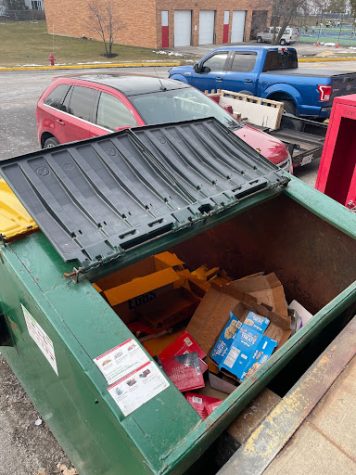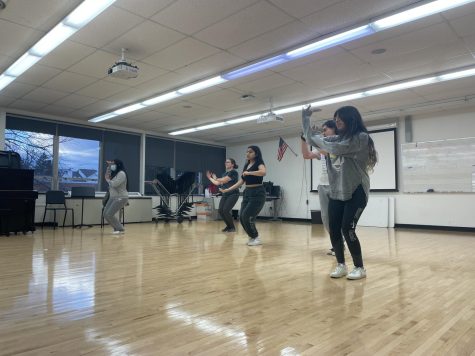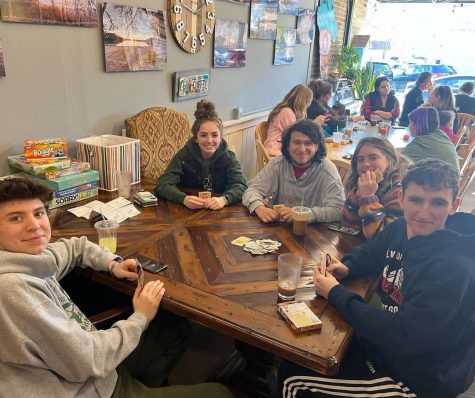Acclaimed Scientist Brings Experiences to STEM Wing
August 23, 2016
On Tuesday, Aug. 16, MHS welcomed chemical scientist Dr. Mark Stoyer to tour the new STEM wing and speak with students.
When he is not working at the Lawrence Livermore National Laboratory in California or studying the origins of the periodic table in Russia, Stoyer often visits schools in the hopes of encouraging the next generation of scientists.
“You never know,” he added, “ninety-five percent of students will probably be sleeping in the corner or won’t care, but there’s a few who will connect and get excited about this kind of science.”
Principal Dr. Anthony Kroll, Science Department Chair Dr. David Greenwood and Literacy Center Specialist Hope Babowice greeted Stoyer on Tuesday morning. They explored some of the highlights of MHS’s brand new addition: three floors of classrooms, multiple state-of-the-art microscopes and a Business Incubator Lab. Afterward, Stoyer presented to several classes in MHS’s new STEM lab.
Senior Rocky Abuyuan, a student in Nanotechnology and Research, described what he learned from Stoyer.
“I was impressed by his visit as he showed interest in teaching the whole room about his discoveries and had a willingness to incorporate his knowledge,” said Abuyuan.
Senior Megan Schlebecker, who’s also enrolled in Nanotechnology and Research, plans on pursuing biochemistry after high school. Meeting Dr. Stoyer gave Schlebecker the opportunity to learn from a professional research scientist.
She explained, “When I first heard about Dr. Stoyer and his experience in his career, I was beyond impressed. . . It was really fascinating how they were able to discover and name these elements that he helped to find.”
Throughout his presentation, Stoyer stressed the building blocks of chemistry. Nanotechnology and Research Instructor Joseph Maxwell knows firsthand the importance these concepts have when understanding experimental science, and he appreciated Stoyer’s ability to explain them in a context that students could grasp.
“Dr. Stoyer did a good review of basic chemistry for the students before he began his discussion of his experiments. When he got to the discussion of the experiments, which was quite complicated, the explanation was easy to follow,” said Maxwell.
Stoyer also elaborated on his own high school experiences. He reminisced, “I didn’t go to the football field or the basketball court—I went to the science lab. I spent a lot of my time after school preparing for the next day’s lecture or doing my own independent research.
MHS students have already begun to take advantage of the resources at their disposal, magnifying specimens up to 10,000,000 times their size and identifying their chemical compositions. At the end of his visit, Stoyer expressed optimism for the future of the STEM wing and the potential it offers.
Stoyer said, “I wish I had something like this when I went through high school. There’s a lot of space for experimenting and strong emphasis on lab safety.”

![MHS Alum Trey Baker hosting a MBK rising event on February ninth at the MHS annex. Said Baker, “I’m just really excited [and] super grateful for the community of Mundelein, for our educators, for our administration, at MHS who are really buying into this.”](https://mhsmustang.com/wp-content/uploads/2023/03/TreyBaker-350x475.jpg)

